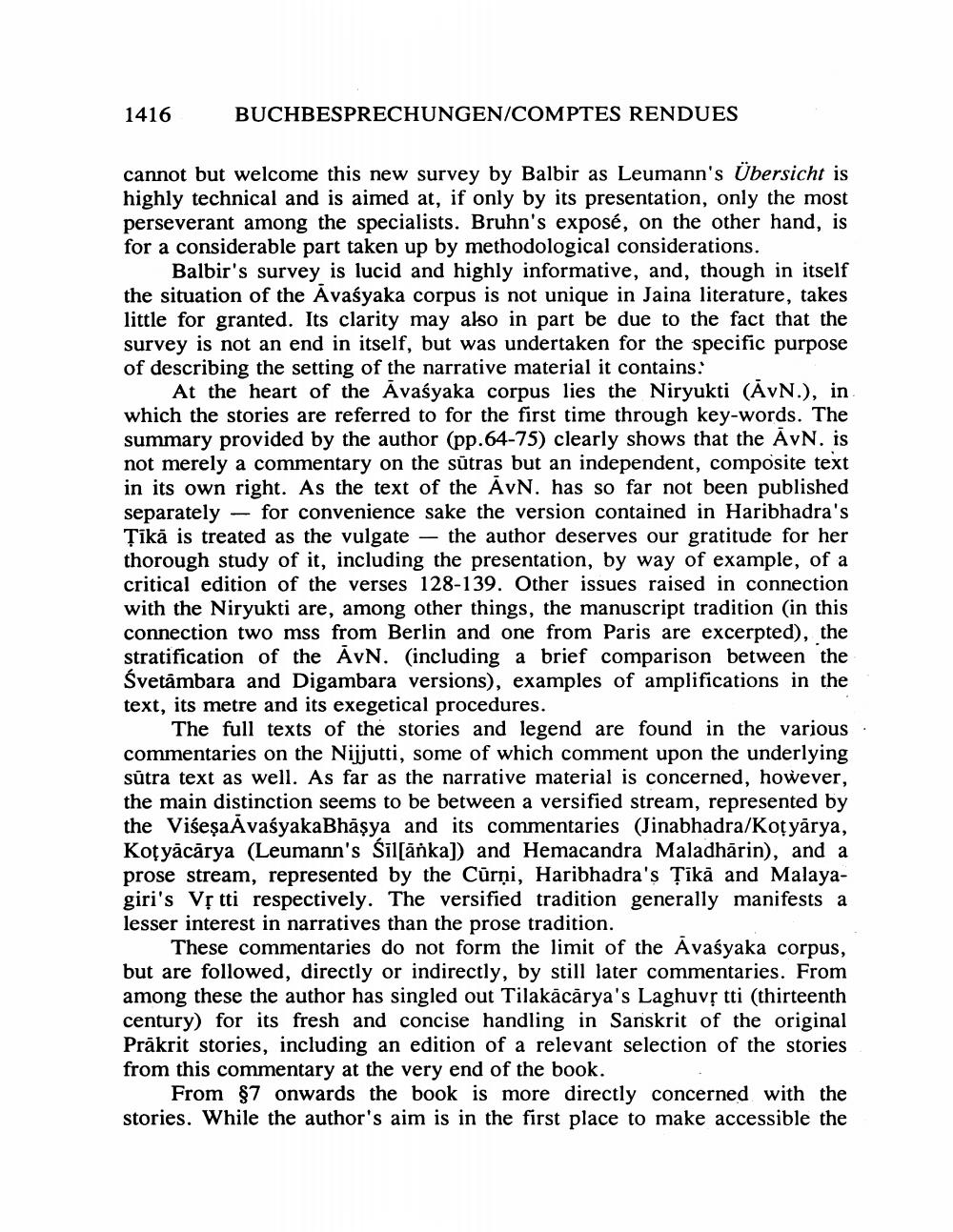________________
1416
BUCHBESPRECHUNGEN/COMPTES RENDUES
cannot but welcome this new survey by Balbir as Leumann's Ubersicht is highly technical and is aimed at, if only by its presentation, only the most perseverant among the specialists. Bruhn's exposé, on the other hand, is for a considerable part taken up by methodological considerations.
Balbir's survey is lucid and highly informative, and, though in itself the situation of the Avaśyaka corpus is not unique in Jaina literature, takes little for granted. Its clarity may also in part be due to the fact that the survey is not an end in itself, but was undertaken for the specific purpose of describing the setting of the narrative material it contains:
At the heart of the Avaśyaka corpus lies the Niryukti (ĀvN.), in which the stories are referred to for the first time through key-words. The summary provided by the author (pp. 64-75) clearly shows that the ĀvN. is not merely a commentary on the sūtras but an independent, composite text in its own right. As the text of the AVN. has so far not been published separately - for convenience sake the version contained in Haribhadra's Țikā is treated as the vulgate — the author deserves our gratitude for her thorough study of it, including the presentation, by way of example, of a critical edition of the verses 128-139. Other issues raised in connection with the Niryukti are, among other things, the manuscript tradition in this connection two mss from Berlin and one from Paris are excerpted), the stratification of the AVN. (including a brief comparison between the Svetambara and Digambara versions), examples of amplifications in the text, its metre and its exegetical procedures.
The full texts of the stories and legend are found in the various commentaries on the Nijjutti, some of which comment upon the underlying sūtra text as well. As far as the narrative material is concerned, however, the main distinction seems to be between a versified stream, represented by the VisesaAvaśyakaBhāşya and its commentaries (Jinabhadra/Kotyārya, Koțyācārya (Leumann's Sil[ānka]) and Hemacandra Maladhārin), and a prose stream, represented by the Cūrņi, Haribhadra's Țikā and Malayagiri's Vị tti respectively. The versified tradition generally manifests a lesser interest in narratives than the prose tradition.
These commentaries do not form the limit of the Avaśyaka corpus, but are followed, directly or indirectly, by still later commentaries. From among these the author has singled out Tilakācārya's Laghuvị tti (thirteenth century) for its fresh and concise handling in Sanskrit of the original Prākrit stories, including an edition of a relevant selection of the stories from this commentary at the very end of the book.
From $7 onwards the book is more directly concerned with the stories. While the author's aim is in the first place to make accessible the




